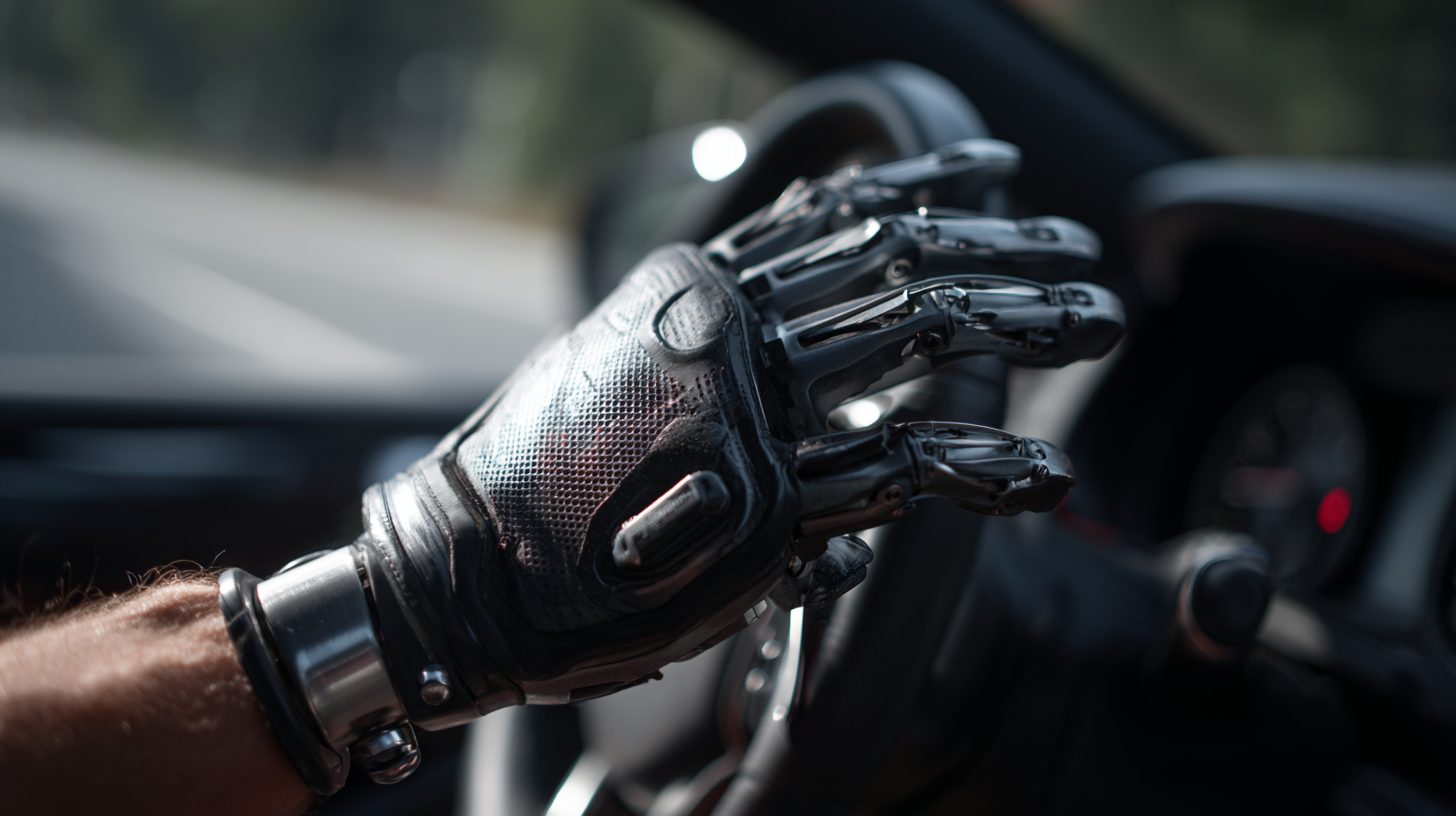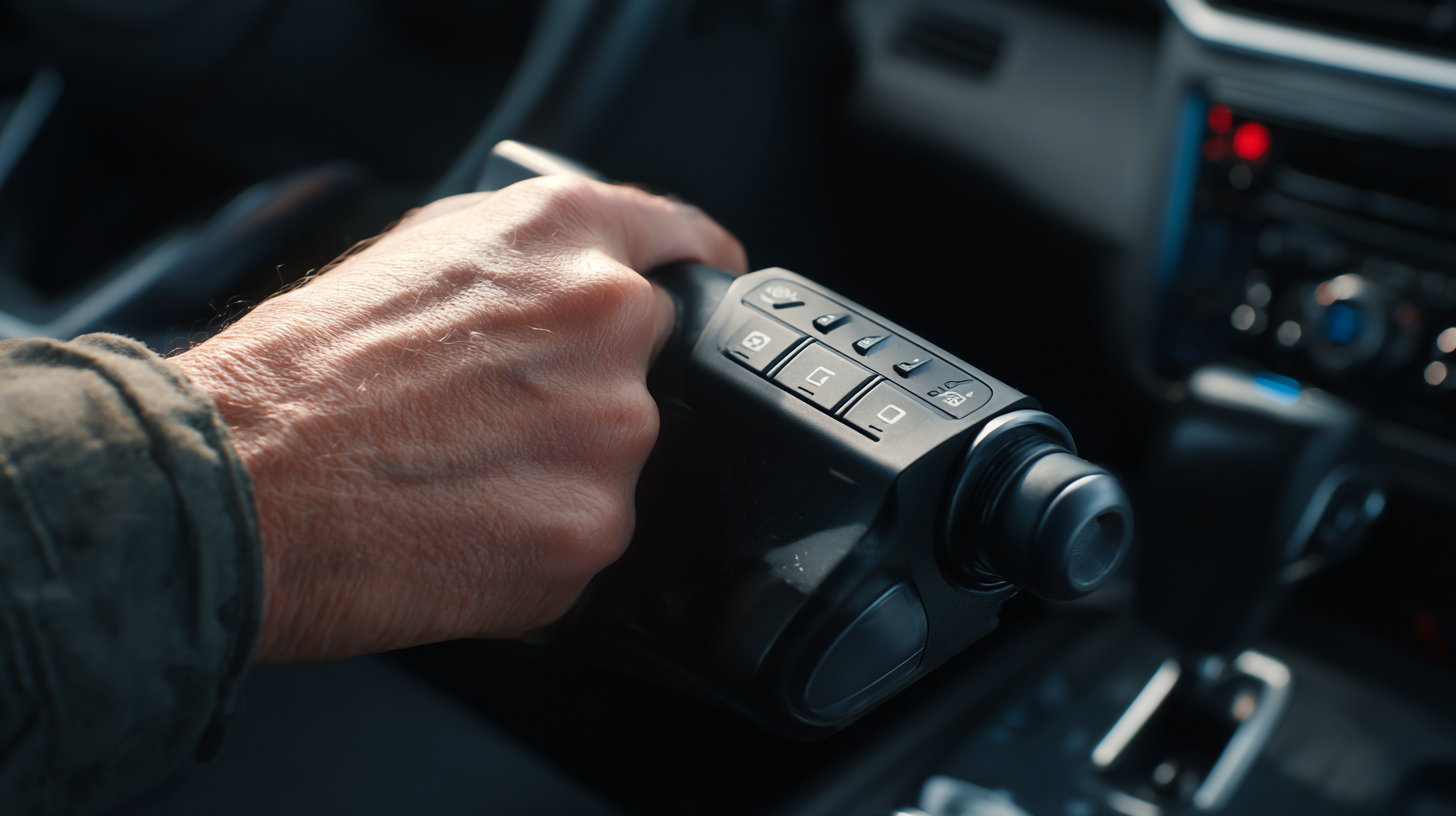The Future of Hand Controls in Automotive Innovation
As the automotive industry continues to evolve, the spotlight shines on innovative technologies that enhance driving experiences for everyone, including those with disabilities. One such innovation gaining traction is the development of hand controls for cars, which provide an alternative solution for individuals who may find traditional foot controls challenging.
 These adaptations are transforming the way people interact with vehicles, allowing for greater independence and accessibility. In this blog, we will explore the future of hand controls in automotive innovation, examining how advancements in design, functionality, and technology are shaping this essential component of vehicle accessibility. By understanding the potential of hand controls for cars, we can appreciate their role in creating a more inclusive automotive landscape that meets the diverse needs of all drivers.
These adaptations are transforming the way people interact with vehicles, allowing for greater independence and accessibility. In this blog, we will explore the future of hand controls in automotive innovation, examining how advancements in design, functionality, and technology are shaping this essential component of vehicle accessibility. By understanding the potential of hand controls for cars, we can appreciate their role in creating a more inclusive automotive landscape that meets the diverse needs of all drivers.
Emerging Technologies Enhancing Hand Control Systems in Vehicles
As automotive innovation advances, emerging technologies are significantly enhancing hand control systems in vehicles, creating safer and more accessible driving experiences. One notable development is the introduction of advanced hand control systems designed specifically for individuals with disabilities. These systems have evolved to allow drivers with limited mobility to operate vehicles effectively. For instance, recent innovations have integrated new braking mechanisms that provide enhanced control, giving paralyzed race car drivers the ability to compete at high levels. Such advancements not only democratize the driving experience but also push the boundaries of automotive engineering to include more adaptive solutions.
The integration of smart technologies into hand control systems reflects a broader trend towards customization and automation in transportation. With the rise of autonomous vehicles, systems such as hands-free driving technologies are paving the way for a future where driver assistance is maximized. These technologies facilitate safer driving by allowing drivers to maintain control with minimal physical input. As we look ahead, the focus on developing innovative hand control solutions will continue to play a crucial role in making all vehicles more inclusive, setting the stage for a transportation landscape that aligns with the diverse needs of its users.
The Future of Hand Controls in Automotive Innovation - Emerging Technologies Enhancing Hand Control Systems in Vehicles
| Technology |
Description |
Impact on SAE Standards |
Current Adoption Rate |
Future Outlook |
| Gesture Recognition |
Allows drivers to control in-car systems using hand gestures. |
Enhances HMI (Human-Machine Interface) guidelines. |
10% in premium models. |
Expected to rise to 40% by 2025. |
| Handwriting Recognition |
Enables input via handwriting on touchscreens. |
Aligns with advanced input methods regulations. |
5% usage in connected vehicles. |
Projected increase to 20% by 2026. |
| Adaptive Steering Systems |
Steering systems that adjust based on hand pressure and input. |
Supports new safety requirements. |
15% in new electric vehicles. |
Expected at 30% by 2027. |
| Voice-Controlled Interfaces |
Enables hands-free operation of vehicle functions. |
Adheres to new driver distraction standards. |
20% usage in all new models. |
Estimated to reach 50% by 2028. |
Adaptive Hand Control Interfaces for Diverse Driver Needs
As automotive innovation advances, the demand for adaptive hand control interfaces is more crucial than ever. These interfaces are designed to accommodate the diverse needs of drivers, particularly those with disabilities or unique driving requirements. By integrating customizable controls, manufacturers are paving the way for a more inclusive driving experience, allowing individuals who may have previously struggled with traditional vehicles to operate them with confidence and ease.
Adaptive hand control systems utilize a range of technologies to cater to users' varying physical capabilities. From joystick-like controls to touch-sensitive surfaces, each interface can be designed or modified to ensure maximum accessibility and comfort for the driver. Moreover, advancements in artificial intelligence and machine learning are enabling these systems to become smarter over time, learning from individual driving habits and preferences to provide a more personalized experience.
The potential impact of these innovations extends beyond just enhanced safety and usability; they also empower drivers by fostering independence and mobility. As the automotive industry continues to evolve, the commitment to designing adaptive hand control interfaces that respect and respond to the complexities of human needs will play a significant role in shaping the future of driving for everyone.
Innovative Safety Features in Hand Control Design
The incorporation of innovative safety features in hand control design is pivotal as the automotive industry moves toward greater accessibility and enhanced user experience. Modern hand controls are not just adaptations for those with mobility challenges; they now integrate advanced technology that significantly improves safety for all drivers. Innovations such as adaptive controls, which adjust their sensitivity based on driving conditions, provide a layer of protection that helps prevent accidents caused by overreaction or loss of control.

Furthermore, the integration of sensors in hand control design has revolutionized how drivers interact with their vehicles. These sensors can monitor driver inputs and provide real-time feedback, allowing for proactive adjustments that enhance safety. For instance, if a driver is making abrupt movements, the system can subtly stabilize the controls to promote smoother operation. The fusion of ergonomics and technology is not only creating a more intuitive experience but also ensuring that safety is paramount, paving the way for a future where all drivers can feel secure behind the wheel, regardless of their physical capabilities.
Integrating Hand Controls with Autonomous Driving Systems
As the automotive industry evolves towards greater automation, integrating hand controls with autonomous driving systems is becoming increasingly crucial. These systems not only represent a leap in technology but also enhance user experience by enabling seamless interaction between human drivers and self-driving vehicles. The future of hand controls will likely revolve around intuitive interfaces that allow drivers to feel in control, even when the vehicle takes over. This integration promises to address safety concerns and comfort levels, as drivers begin to rely on automated systems to manage driving tasks.

Emerging technologies such as multi-sensor fusion and AI-driven decision-making models aim to refine the interaction between hand controls and autonomous driving systems. By utilizing sophisticated algorithms, these technologies can work in real-time to enhance vehicle responsiveness, ensuring that drivers are always informed and equipped to intervene if necessary. This synergistic relationship will not only improve the safety of autonomous vehicles but also foster a more trusting relationship between users and technology. As autonomous driving continues to mature, the role of hand controls as a supportive tool in this landscape will evolve, paving the way for a new era of driving convenience and connectivity.
Future Trends: Customization and User Experience in Hand Controls
The automotive industry is witnessing a transformative shift in hand controls, with a growing emphasis on customization and user experience. As cars evolve into smart, connected devices, the need for controls that adapt to individual preferences becomes paramount. Customization not only enhances driver comfort but also increases safety by allowing users to select hand control configurations that suit their specific needs. This trend is particularly significant for individuals with disabilities, as tailored hand controls offer a pathway to greater independence on the road.
Future innovations in hand controls are expected to incorporate advanced technologies such as haptic feedback and intuitive gesture recognition. These features will enhance user experience by allowing drivers to interact with their vehicles in more natural and efficient ways. For instance, controls that respond to subtle hand movements or provide tactile responses can help drivers maintain focus on the road while enjoying a seamless interaction with their vehicle’s systems. As manufacturers prioritize user experience, we can anticipate a new era of automotive design where hand controls are not just functional but are also a central aspect of creating a personalized driving experience.
The Future of Hand Controls in Automotive Innovation